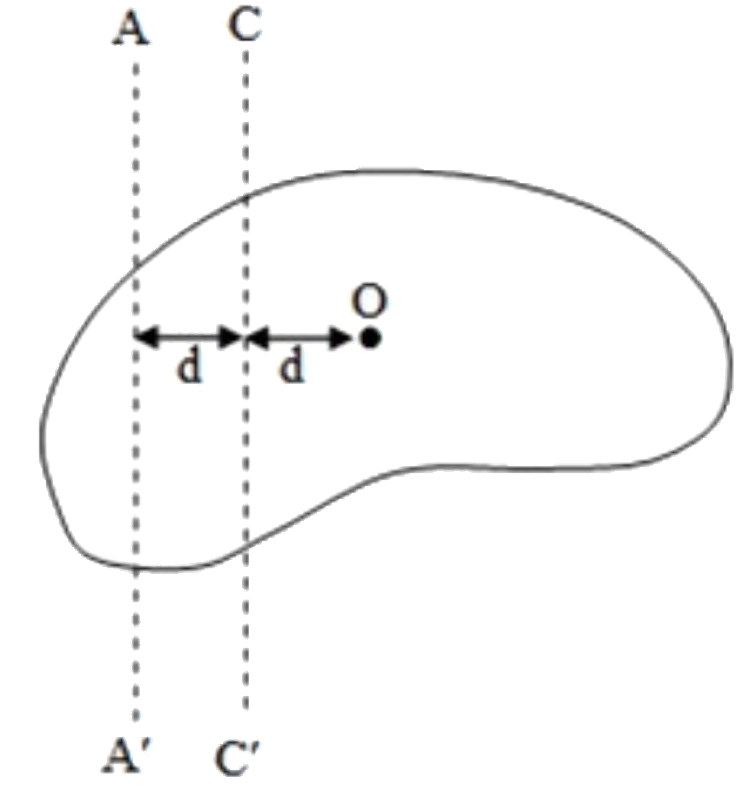Mass of a body is……….of………………of the body……………..
To solve the question, we need to fill in the blanks regarding the relationship between mass and inertia in the context of linear motion. Here’s a step-by-step solution:
Step 1: Understanding Mass
- Mass is a fundamental property of a body that quantifies the amount of matter it contains. It is also a measure of the body's resistance to acceleration when a force is applied.
Step 2: Defining Inertia
- Inertia is the tendency of an object to resist changes in its state of motion. The greater the mass of an object, the greater its inertia.
Step 3: Relating Mass to Inertia
- In the context of linear motion, mass can be defined as a measure of inertia. This means that mass determines how much an object will accelerate when a certain force is applied to it.
Step 4: Newton's First Law of Motion
- According to Newton's First Law of Motion, an object at rest will remain at rest, and an object in motion will continue in motion with the same speed and in the same direction unless acted upon by a net external force. This law emphasizes the concept of inertia.
Final Statement
- Therefore, we can fill in the blanks as follows:
"Mass of a body is a measure of inertia of the body in linear motion."
- Mass is a fundamental property of a body that quantifies the amount of matter it contains. It is also a measure of the body's resistance to acceleration when a force is applied.
- Inertia is the tendency of an object to resist changes in its state of motion. The greater the mass of an object, the greater its inertia.
- In the context of linear motion, mass can be defined as a measure of inertia. This means that mass determines how much an object will accelerate when a certain force is applied to it.
- According to Newton's First Law of Motion, an object at rest will remain at rest, and an object in motion will continue in motion with the same speed and in the same direction unless acted upon by a net external force. This law emphasizes the concept of inertia.
- Therefore, we can fill in the blanks as follows:
"Mass of a body is a measure of inertia of the body in linear motion."
Topper's Solved these Questions
- BOOK - PRADEEPCHAPTER - SYSTEMS OF PARTICLES AND ROTATIONAL MOTIONEXERCISE - PROBLEMS FOR PRACTICE TYPE A2videos
SYSTEMS OF PARTICLES AND ROTATIONAL MOTION
- BOOK - PRADEEPCHAPTER - SYSTEMS OF PARTICLES AND ROTATIONAL MOTIONEXERCISE - PROBLEMS FOR PRACTICE69videos
SYSTEMS OF PARTICLES AND ROTATIONAL MOTION
- BOOK - PRADEEPCHAPTER - SYSTEMS OF PARTICLES AND ROTATIONAL MOTIONEXERCISE - MULTIPLE CHOICE QUESTIONS151videos
SYSTEMS OF PARTICLES AND ROTATIONAL MOTION
- BOOK - PRADEEPCHAPTER - RAY OPTICSEXERCISE - Problem For Practice(a)25videos
RAY OPTICS
- BOOK - PRADEEPCHAPTER - THERMODYNAMICSEXERCISE - Assertion- Reason Type Questions19videos
THERMODYNAMICS
Similar Questions
Knowledge Check
- Question 1 - Select One
The mass of a body
Ais slightly different at different places on earthBis independent of the free-fall accelerationCis the same for all bodies of the same volumeDcan be measured most accurately on a spring scale.
Mass of a body cannot be zero.
View SolutionMass of a body is defined as the ………. Which can …………….
View SolutionThe figure shows a body of arbitrary shape. O is the center of mass of the body and mass of the body is M. If ICC'=I0 then IAA' will be equal to
 View Solution
View SolutionCan the centre of mass of a body be at a point outside the body?
View SolutionGiven the location of the centre of mass of a (i) sphere, (ii) cylinder, (iii) ring, and (iv) cube, each of uniform mass density. Does the centre of mass of a body necessarily lie on the body ?
View SolutionFigure shows a body of arbitrary shape 'O' is the centre of mass of the body and mass of the body is M. If moment of inertia about axis CC is Icc'. then moment of inertia about axis AA (IAA' ) will be equal to - A с - did A' C' M02
View SolutionThe centre of mass of a rigid body always lies inside the body, Is this statement true or false?
View Solution

